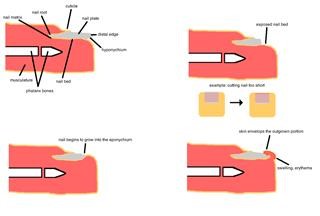The Infertility Website
Infertility Who
We have the complete source for total information and resources for Infertility Who on the web.
ED may be the consequence of the conversion of androgens to estradiol. IVF and other fertility treatments have resulted in an increase in multiple births, provoking ethical analysis because of the link between multiple pregnancies, premature birth, and a host of health problems. Normal Pregnancies Resulting from Testicular Sperm Extraction and Intracytoplasmic Sperm Injection for Azoospermia Due to Maturation Arrest. (PDF, 6 MB) Fertility and Sterility, 1996.
Surprisingly, the complete absence of sperm in the semen (a condition known as azoospermia), can be a good thing. Using this small amount of FSH, the patient generally develops 1-2 follicles, decreasing the risk for multiple pregnancy and eliminating the risk of ovarian hyperstimulation syndrome. In this procedure, 5–10 mm diameter instruments (graspers, scissors, clip applier) can be introduced by the surgeon into the abdomen through trocars (hollow tubes with a seal to keep the CO 2 from leaking). Radiation therapy: If this is aimed near the reproductive organs, it can increase the risk of fertility problems. Testing may begin with a physical exam and questions about past medical problems. A special type of laparoscope called a fertiloscope, which is modified for transvaginal application, can be used.
More Resources For Female Infertility Causes and Treatment Ppt

Even more Info Around Female Infertility Causes and Treatment Ppt
Here, the hormones FSH (= follicle stimulating hormone) and LH (= luteinizing hormone) play an important role. Demographic definitions of infertility An inability of those of reproductive age (15-49 years) to become or remain pregnant within five years of exposure to pregnancy. (DHS2) An inability to become pregnant with a live birth, within five years of exposure based upon a consistent union status, lack of contraceptive use, non-lactating and maintaining a desire for a child. (Trends in prevalence4). For a woman to conceive, certain things have to happen: vaginal intercourse must take place around the time when an egg is released from her ovary; the system that produces eggs has to be working at optimum levels; and her hormones must be balanced.[54] For women, problems with fertilisation arise mainly from either structural problems in the Fallopian tube or uterus or problems releasing eggs. Furthermore, an immunological cause in the cervical mucus is possible. Antibodies can abnormally attack a man's own sperm on their way to the egg.
Here are Some More Resources on Infertility Who
Testing for Men In the case of men, a general physical examination will be performed, with discussions concerning medical history, illnesses, disabilities, medications and sexual habits. It also gives them more options in dealing with unexpected adverse events (e.g., uncontrolled bleeding) that may otherwise require creating a much larger incision and converting to a fully open surgical procedure.[5] Conceptually, the laparoscopic approach is intended to minimise post-operative pain and speed up recovery times, while maintaining an enhanced visual field for surgeons. Most couples (approximately 85%) will achieve pregnancy within one year of trying, with the greatest likelihood of conception occurring during the earlier months.
Even more Information About Unexplained Infertility How Did You Get Pregnant
2) Ovulation disorders: Normal and regular ovulation, or release of a mature egg, is essential for women to conceive naturally. For in-vitro fertilization, a 100,000 of sperm are necessary and, for the intracytoplasmatic sperm injection, only a few sperms are required. On the day of ovulation, a mucus sample is taken after intercourse. Mumps: If this occurs after puberty, inflammation of the testicles may affect sperm production. The medicalization of infertility has unwittingly led to a disregard for the emotional responses that couples experience, which include distress, loss of control, stigmatization, and a disruption in the developmental trajectory of adulthood.[16] Infertility may have psychological effects. Thyroid problems: An overactive or underactive thyroid gland can lead to a hormonal imbalance. Causes of infertility include male factors, ovulatory dysfunction, uterine abnormalities, tubal obstruction, peritoneal factors, or cervical factors. Additionally, the sperm may be unable to cross the cervical mucus or may have ultrastructural abnormalities. Weight loss in obese infertile women results in improvement in reproductive outcome for all forms of fertility treatment.
Previous Next
See also
Infertility
Infertility Who
Infertility Bracelet